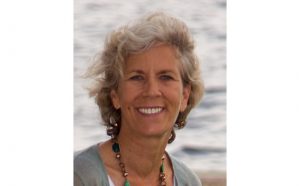
What is presence? And how does it relate to mindfulness?
I draw strictly from personal experience to answer these questions. For me, presence is the embodiment of mindfulness. It is the activation of all the senses seamlessly blending into complete awareness in the moment. It is when judgment is suspended and hasn’t even entered your consciousness. And it is when you’re in a state of deep listening both within and without, as if all boundaries have dissolved and you just ARE, whether by yourself, with another person(s), or with your animal friends.
Kinda deep, right? And yet, we all experience it when we’re totally enthralled in what we’re doing. We just may not know it. Artists experience it when creating. Runners experience it when in the zone. Bird watchers experience it when in nature.
Think of it this way. Mindfulness is the awareness of being in the moment and presence is simply the fact of being in the moment. To understand this in the context of our day, let’s start by looking at the opposite, like we did with my first post on mindfulness. And let’s look at it in relation to when we’re with other people, where practicing presence can prove most beneficial and can sometimes prove most challenging.
Recollect those times when you’re speaking to someone and you can tell they are not listening. It might be a time when you have something extra special to say, and can’t wait to share, and in the middle of your story, you see a vacant look and know they aren’t listening. Or how about when a friend, colleague or family member is talking to you, you’re right there with them, and then you realize your mind has wandered off and you don’t remember where in the conversation you dropped out. They are intently looking at you, waiting for an answer to the question you didn’t hear. You don’t know what they said.
My beloved father was a brilliant professor who was often lost in thought. I would tell him things, but I could tell he wasn’t listening to me. Often, I would raise my voice a little and say, “Dad, Dad, did you hear what I said? Are you listening to me?” He would chuckle and give me his sweet little smile which generally indicated he hadn’t heard a word I said. The practice of mindfulness wasn’t in the headlines when I was young. In fact, “absent minded professors” were much more common, in the movies and in real life. So I grew up believing that being lost in your head was a sign of intelligence and consciously or unconsciously I adopted this practice myself. Little did I know that I had learned a lesson in the unfortunate way we humans often interact with each other
Frequently, our lack of presence has nothing to do with the person with whom we’re speaking. I know my father loved me dearly and although at times I may have taken what appeared to be disinterest personally, ultimately, I realized it had nothing to do with me. Sometimes, we are already distracted before the conversation begins, or it could be something said that sets us off down a rabbit hole in our heads, or we’re so busy thinking up our response that we miss everything we’re supposed to be responding to.
I have known many people who are amazingly present when with other people. They appear to hang onto every spoken word. They ask relevant questions and look genuinely interested. When speaking to someone like that, we feel heard. We feel like we matter, and we feel like what we have to say is important. Practicing presence is a gift to give and a gift to receive.
Next month we’ll explore practicing presence with our everyday teachers. Until then.
Mindfulness Practice: A very simple exercise. Begin to bring your awareness to the number of times you’re not present with others and they are not present with you. Try to refrain from judging yourself and those with whom you interact. This is just about building awareness.
Until Heather reestablishes her online presence, she can be found on LinkedIn or via email.
By Contributing Author, Heather Noto

